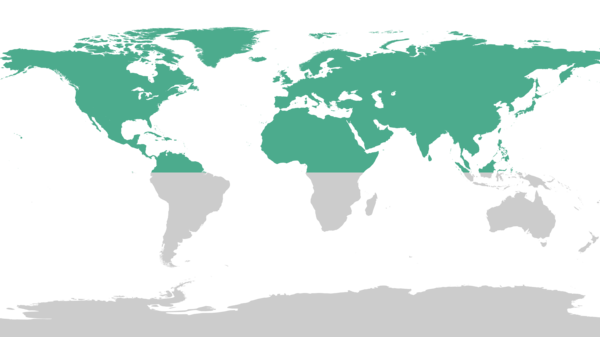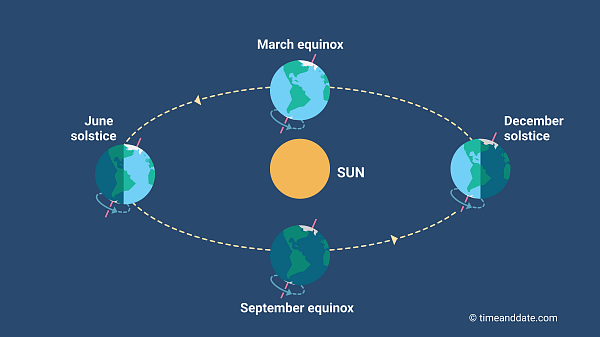When Is the First Day of Fall 2025?
North of the equator, fall begins in September; in the Southern Hemisphere, it starts in March. Find out exact dates and how the fall season is defined.

In temperate climes, fall can be magical as trees display their autumn foliage.
©iStockphoto.com/Songquan Deng
Equal day and night? It can also happen in June!
Fall 2025 Dates
According to the astronomical definition, fall begins with the autumnal equinox. In the Northern Hemisphere, it's the September equinox; south of the equator, it is the equinox in March.
Equinoxes and solstices in your city
Autumn Equinox, Northern Hemisphere (September)
North America, Europe, most of Asia, Northern Africa

In Columbus, Ohio, USA: Monday, September 22, 2025 at 2:19 pm EDT (Change location)
This corresponds to Monday, September 22, 2025 at 18:19 UTC.
Autumn Equinox, Southern Hemisphere (March)
Australia, New Zealand, South America, southern Africa

In Columbus, Ohio, USA: Thursday, March 20, 2025 at 5:01 am EDT (Change location)
This corresponds to Thursday, March 20, 2025 at 09:01 UTC.
Alternative Fall Start Dates
Meteorologists use a different method of defining the first day of fall. And, in some countries, the beginning of the seasons is determined by average temperatures rather than fixed dates or astronomical events.
Meteorological and other seasons definitions
Dwindling Daylight around the Fall Equinox
In most locations on Earth—except for tropical regions—the start of fall is accompanied by rapidly shortening days.
At any given location, the day-to-day difference in day length is greatest around the days of the equinoxes. After the fall equinox, days still get shorter, but at an ever-decreasing rate. On the shortest day of the year, the winter solstice, the day-to-day difference reaches zero.
At the same time, locations closer to the poles experience larger day-to-day differences. In Toronto, the day of the fall equinox is just under 3 minutes shorter than the previous day; in Miami, roughly 2000 kilometers or 1200 miles farther south, the difference is only about 1 minute and 30 seconds.
Day-to-day differences in your city


Our Earth is tilted as it orbits the Sun, which is the reason we have seasons on Earth.
©timeanddate.com
Equal Day and Night?
Astronomical fall begins on the day of the equinox. The name of the event derives from Latin and means equal night, giving the impression that both day and night are exactly 12 hours long. However, that is not entirely true. In most regions, the day of the equinox is a bit longer than 12 hours.
Equilux
The date when day and night are actually equal is called the equilux. It falls a few days before the spring equinox and some days after the fall equinox in both hemispheres.
Other astronomical terms & definitions
Falling Temperatures
In the temperate zone, in particular, fall is also the time when the warm, stable weather of summer gives way to colder, more erratic weather conditions, though this varies substantially from one region to another.
Climate and monthly average temperatures in your city
Traditions and Folklore
The start of autumn and the fall equinox are celebrated in cultures and religions around the world with various fall traditions, holidays, and festivals.
Fall festivals: Mabon, Navaratri, and the Snake of Light
Fall Months
In the Northern Hemisphere, astronomical and meteorological autumn runs from September to December. South of the equator, it starts in March and ends in June. Read more about the history and meaning of the fall months:
Northern fall months
September | October | November | December
Southern fall months
How Long Is Fall?
The Earth does not move at a constant speed in its elliptical (oval) orbit, so the seasons are not of equal length. On average, fall lasts for 89.8 days in the Northern Hemisphere and 92.8 days in the Southern Hemisphere.
Average season lengths:
- March equinox to June solstice: 92.8 days
- June solstice to September equinox: 93.6 days
- September equinox to December solstice: 89.8 days
- December solstice to March equinox: 89.0 days
Fall or Autumn?
Both fall and autumn are correct English terms for the season preceding winter. Autumn is primarily used in British English, while fall is a term more frequently used in American English.